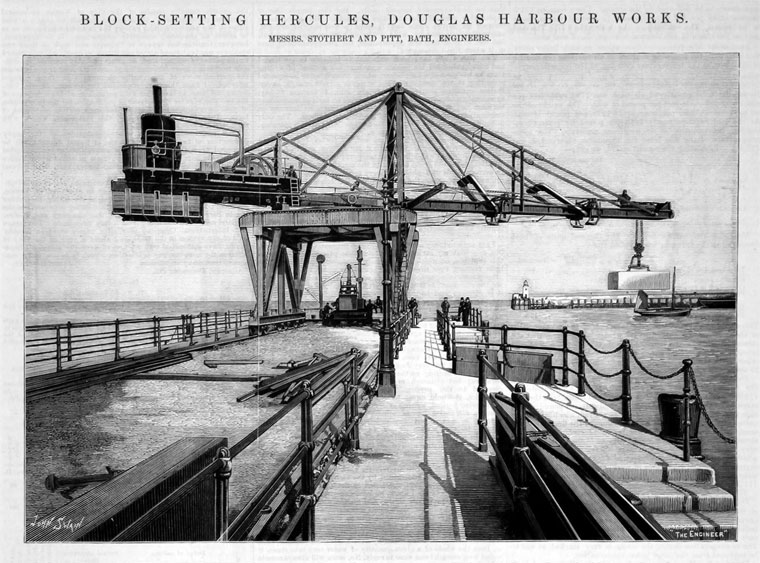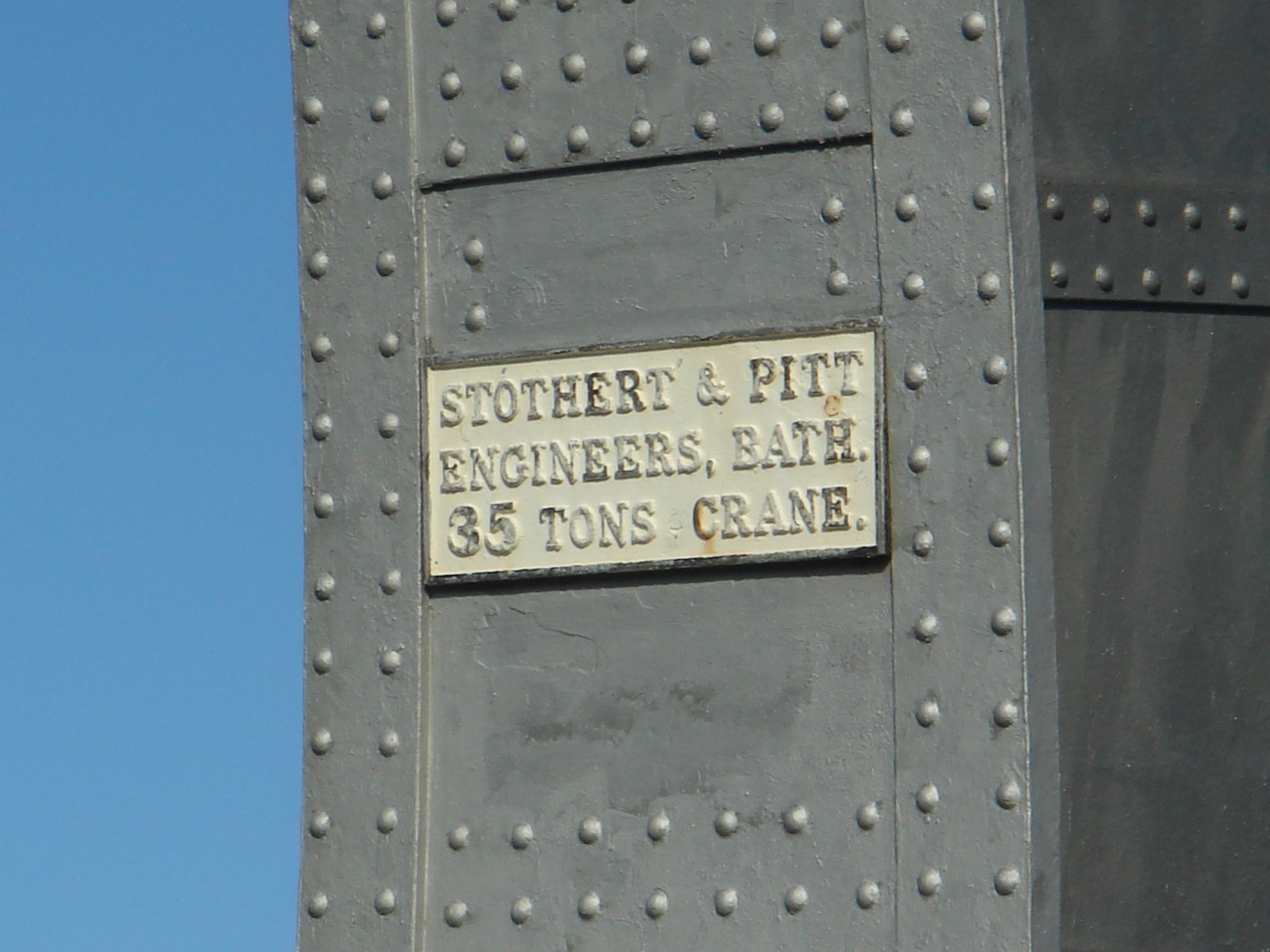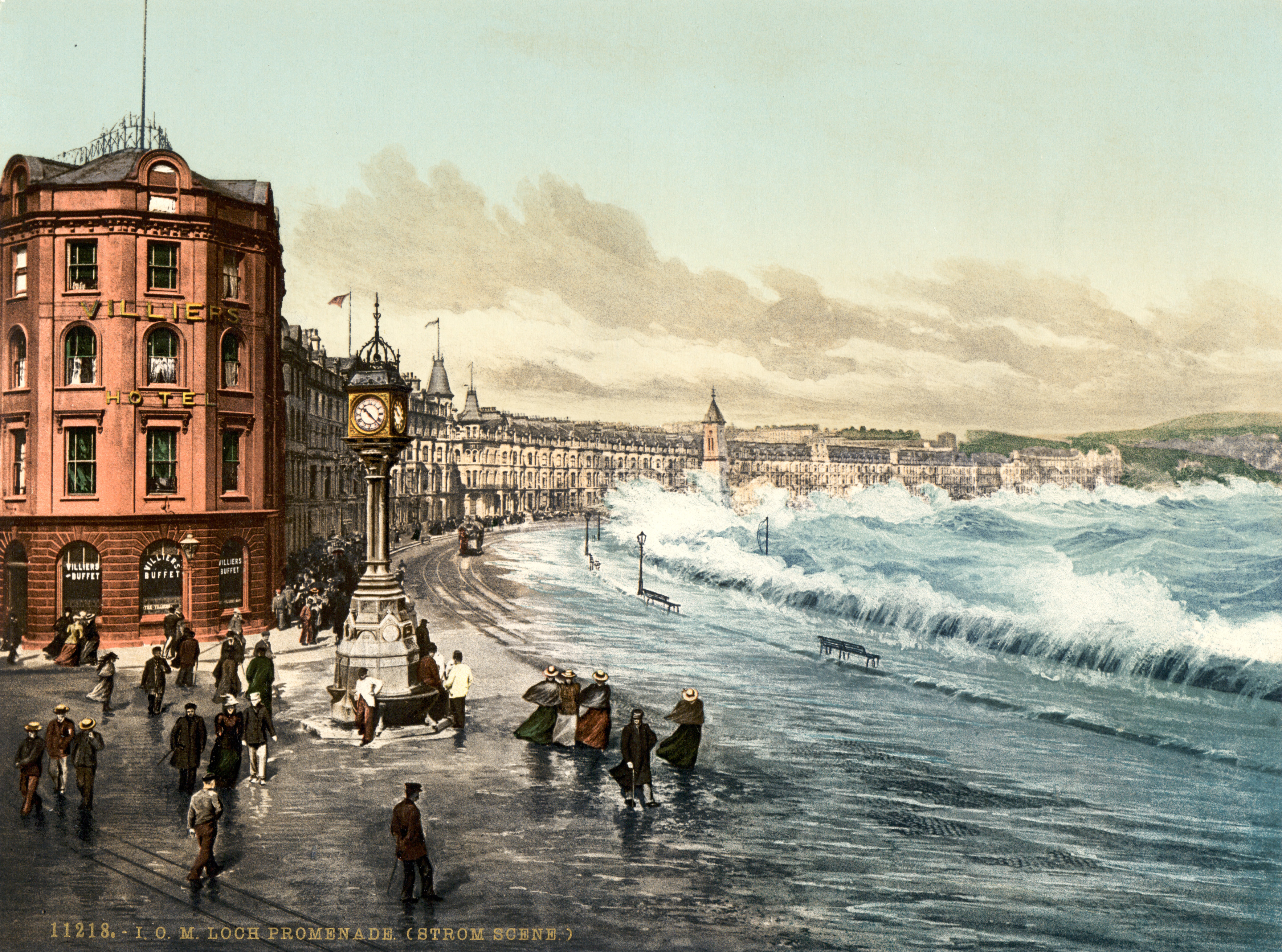|
Breakwater Crane Railway
The Douglas Breakwater Crane Railway was a massive self-propelled steam block-setting crane, with a capacity of 15 tons, built by Stothert & Pitt of Bath that ran the length of the original breakwater at Douglas, also used for the loading and unloading of vessels. A later crane was built by Cowans, Sheldon of Carlisle (capacity 25 tons; carried on two four-wheel bogies; Works number 9057 of 1948 to Drawing 18087). The crane was owned by the Isle of Man ) , anthem = "O Land of Our Birth" , image = Isle of Man by Sentinel-2.jpg , image_map = Europe-Isle_of_Man.svg , mapsize = , map_alt = Location of the Isle of Man in Europe , map_caption = Location of the Isle of Man (green) in Europe ... Harbour Board and ran on gauge. References Douglas, Isle of Man Railway lines in the Isle of Man Individual cranes (machines) 10 ft gauge railways {{port-stub ... [...More Info...] [...Related Items...] OR: [Wikipedia] [Google] [Baidu] |
Block-setting Crane
A block-setting crane is a form of crane. They were used for installing the large stone blocks used to build breakwaters, moles and stone piers. The mid-Victorian age was a time of great expansion in industry and shipping. Better protected harbours were needed, with man-made breakwaters extending beyond natural bays or coasts, in order to enclose safe harbours for the new generations of sailing ships and iron steamships being built. This time also coincided with the availability of large-scale ironworking with which to build cranes, and portable steam power with which to drive them. In contrast to the navvies who had built the earlier canals and the first railways mostly with human and animal muscle power, these new ports were built by powered engines as well. Development Block-setting cranes were required to lift a single large block in one lift, and to position it accurately. They also needed to reach a distance horizontally, but not to lift their loads high. Their workin ... [...More Info...] [...Related Items...] OR: [Wikipedia] [Google] [Baidu] |
Stothert & Pitt
Stothert & Pitt was a British engineering company founded in 1855 in Bath, England. It was the builder of various engineering products ranging from Dock cranes to construction plant and household cast iron items. It went out of business in 1989. The name and intellectual property became part of Clarke Chapman. History George Stothert (n.b. early on the name is sometimes rendered as Stoddard or Stodhert) moved to Bath in 1785 having taken over Thomas Harris's ironmonger's business. He was an agent for Abraham Darby I's Coalbrookdale Iron Company, selling all types of domestic ironmongery. By 1815 they set up their own foundry as Abraham Darby had opened his own warehouse in Bristol. The company was now managed by his son, also George. In 1851 they exhibited a hand crane at the Great Exhibition. In 1837, Henry Stothert, brother of the younger George, set up an ironworks in Bristol, first as ''Henry Stothert & Co.'', then, joined by Edward Slaughter, Stothert, Slaughter & Co. ... [...More Info...] [...Related Items...] OR: [Wikipedia] [Google] [Baidu] |
Bath, Somerset
Bath () is a city in the Bath and North East Somerset unitary area in the county of Somerset, England, known for and named after its Roman-built baths. At the 2021 Census, the population was 101,557. Bath is in the valley of the River Avon, west of London and southeast of Bristol. The city became a World Heritage Site in 1987, and was later added to the transnational World Heritage Site known as the " Great Spa Towns of Europe" in 2021. Bath is also the largest city and settlement in Somerset. The city became a spa with the Latin name ' ("the waters of Sulis") 60 AD when the Romans built baths and a temple in the valley of the River Avon, although hot springs were known even before then. Bath Abbey was founded in the 7th century and became a religious centre; the building was rebuilt in the 12th and 16th centuries. In the 17th century, claims were made for the curative properties of water from the springs, and Bath became popular as a spa town in the Georgian era. ... [...More Info...] [...Related Items...] OR: [Wikipedia] [Google] [Baidu] |
Breakwater (structure)
A breakwater is a permanent structure constructed at a coastal area to protect against tides, currents, waves, and storm surges. Part of a coastal management system, breakwaters are installed to minimize erosion, and to protect anchorages, helping isolate vessels within them from marine hazards such as prop washes and wind-driven waves. A breakwater, also known in some contexts as a jetty, may be connected to land or freestanding, and may contain a walkway or road for vehicle access. On beaches where longshore drift threatens the erosion of beach material, smaller structures on the beach, usually perpendicular to the water's edge, may be installed. Their action on waves and current is intended to slow the longshore drift and discourage mobilisation of beach material. In this usage they are more usually referred to as groynes. Purposes Breakwaters reduce the intensity of wave action in inshore waters and thereby provide safe harbourage. Breakwaters may also be small structu ... [...More Info...] [...Related Items...] OR: [Wikipedia] [Google] [Baidu] |
Douglas, Isle Of Man
Douglas ( gv, Doolish, ) is the capital and largest town of the Isle of Man, with a population of 26,677 (2021). It is located at the mouth of the River Douglas, and on a sweeping bay of . The River Douglas forms part of the town's harbour and main commercial port. Douglas was a small settlement until it grew rapidly as a result of links with the English port of Liverpool in the 18th century. Further population growth came in the following century, resulting during the 1860s in a staged transfer of the High Courts, the Lieutenant Governor's residence, and finally the seat of the legislature, Tynwald, to Douglas from the ancient capital, Castletown. The town is the Island's main hub for business, finance, legal services, shipping, transport, shopping, and entertainment. The annual Isle of Man TT motorcycle races start and finish in Douglas. History Early history In the absence of any archaeological data, the origins of the town may be revealed by analysis of the original ... [...More Info...] [...Related Items...] OR: [Wikipedia] [Google] [Baidu] |
Cowans, Sheldon & Company
Clarke Chapman is a British engineering firm based in Gateshead, which was formerly listed on the London Stock Exchange. History The company was founded in 1864 in Gateshead by William Clarke (1831–1890). In 1865 Clarke took in a partner, Abel Chapman, and the two of them developed the business into one of the largest manufacturers of cranes and other mechanical handling equipment in the world. In 1870 two further partners joined the firm, Joseph Watson and Joseph Gurney. The firm became known as Clarke, Chapman and Gurney. Joseph Gurney retired from the firm in 1882. The firm subsequently formed a partnership with John Furneaux and Charles Parsons, and became known as Clarke, Chapman, Parsons, and Company. Parsons left the firm in 1889. By 1907 the firm manufactured an extensive range of ship's auxiliary machinery, mining plant, water tube boilers, and pumps. Clarke Chapman became the main supplier of auxiliary equipment to the British shipbuilding industry before the F ... [...More Info...] [...Related Items...] OR: [Wikipedia] [Google] [Baidu] |
Carlisle, Cumbria
Carlisle ( , ; from xcb, Caer Luel) is a city that lies within the Northern English county of Cumbria, south of the Scottish border at the confluence of the rivers Eden, Caldew and Petteril. It is the administrative centre of the City of Carlisle district which, (along with Cumbria County Council) will be replaced by Cumberland Council in April 2023. The city became an established settlement during the Roman Empire to serve forts on Hadrian's Wall. During the Middle Ages, the city was an important military stronghold due to its proximity to the Kingdom of Scotland. Carlisle Castle, still relatively intact, was built in 1092 by William Rufus, served as a prison for Mary, Queen of Scots in 1568 and now houses the Duke of Lancaster's Regiment and the Border Regiment Museum. In the early 12th century, Henry I allowed a priory to be built. The priory gained cathedral status with a diocese in 1133, the city status rules at the time meant the settlement became a city. ... [...More Info...] [...Related Items...] OR: [Wikipedia] [Google] [Baidu] |
Bogie
A bogie ( ) (in some senses called a truck in North American English) is a chassis or framework that carries a wheelset, attached to a vehicle—a modular subassembly of wheels and axles. Bogies take various forms in various modes of transport. A bogie may remain normally attached (as on many railroad cars and semi-trailers) or be quickly detachable (as the dolly in a road train or in railway bogie exchange); it may contain a suspension within it (as most rail and trucking bogies do), or be solid and in turn be suspended (as most bogies of tracked vehicles are); it may be mounted on a swivel, as traditionally on a railway carriage or locomotive, additionally jointed and sprung (as in the landing gear of an airliner), or held in place by other means (centreless bogies). In Scotland, the term is used for a child’s (usually home-made) wooden cart. While ''bogie'' is the preferred spelling and first-listed variant in various dictionaries, bogey and bogy are also used. ... [...More Info...] [...Related Items...] OR: [Wikipedia] [Google] [Baidu] |
Isle Of Man
) , anthem = "O Land of Our Birth" , image = Isle of Man by Sentinel-2.jpg , image_map = Europe-Isle_of_Man.svg , mapsize = , map_alt = Location of the Isle of Man in Europe , map_caption = Location of the Isle of Man (green) in Europe (dark grey) , subdivision_type = Sovereign state , subdivision_name = United Kingdom , established_title = Norse control , established_date = 9th century , established_title2 = Scottish control , established_date2 = 2 July 1266 , established_title3 = English control , established_date3 = 1399 , established_title4 = Revested into British Crown , established_date4 = 10 May 1765 , official_languages = , capital = Douglas , coordinates = , demonym = Manx; Manxman (plural, Manxmen); Manxwoman (plural, Manxwomen) , ethnic_groups = , ethnic_groups_year = 2021 , ethnic_groups_ref = Official census statistics provided by Statistics Isle of Man, Isle of Man Government: * * , religion = , religion_year = 2021 , relig ... [...More Info...] [...Related Items...] OR: [Wikipedia] [Google] [Baidu] |
Railway Lines In The Isle Of Man
Rail transport (also known as train transport) is a means of transport that transfers passengers and goods on wheeled vehicles running on rails, which are incorporated in tracks. In contrast to road transport, where the vehicles run on a prepared flat surface, rail vehicles (rolling stock) are directionally guided by the tracks on which they run. Tracks usually consist of steel rails, installed on sleepers (ties) set in ballast, on which the rolling stock, usually fitted with metal wheels, moves. Other variations are also possible, such as "slab track", in which the rails are fastened to a concrete foundation resting on a prepared subsurface. Rolling stock in a rail transport system generally encounters lower frictional resistance than rubber-tyred road vehicles, so passenger and freight cars (carriages and wagons) can be coupled into longer trains. The operation is carried out by a railway company, providing transport between train stations or freight customer facilit ... [...More Info...] [...Related Items...] OR: [Wikipedia] [Google] [Baidu] |
Individual Cranes (machines)
An individual is that which exists as a distinct entity. Individuality (or self-hood) is the state or quality of being an individual; particularly (in the case of humans) of being a person unique from other people and possessing one's own needs or goals, rights and responsibilities. The concept of an individual features in diverse fields, including biology, law, and philosophy. Etymology From the 15th century and earlier (and also today within the fields of statistics and metaphysics) ''individual'' meant " indivisible", typically describing any numerically singular thing, but sometimes meaning "a person". From the 17th century on, ''individual'' has indicated separateness, as in individualism. Law Although individuality and individualism are commonly considered to mature with age/time and experience/wealth, a sane adult human being is usually considered by the state as an "individual person" in law, even if the person denies individual culpability ("I followed instr ... [...More Info...] [...Related Items...] OR: [Wikipedia] [Google] [Baidu] |

.jpg)




.jpg)


